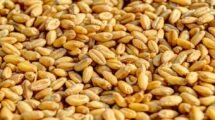The present stretch of widespread unseasonal rainfall has increased the burden of the Karnataka coffee growers, who are in the middle of the 2020-21 crop harvest.
Not only did the rains cause the break of fruit and droppings in the standing crop, but they also increased the chance of early blossoms, which could dent the crop prospects for the next year.
“The rains are premature and will have an effect on the standing crop. The ripened berries will begin to fall and will turn out to be thin. We hope it will end soon.” said KG Jagadeesha, the Coffee Board‘s Secretary.
Also Read: God’s Crown Fruit, a potential medicinal plant
Growers estimate that at least one third of the crop may have been lost due to rainfall and shortages of worker. Owing to the prolonged monsoon and worker shortages, the harvest has been delayed by around a month this year.
We assume that the arabica crop would suffer about 35 percent damage due to late picking as there was a shortage of worker. There will also be damage of about 30 per cent in robustas. As growers have just begun harvesting, there will be bean droppings,” said S Appadurai, Chairman, Karnataka Planters’ Association.
The growers find the collection of the fallen beans difficult and costly. The beans will begin sprouting if not collected in time. It is also important to turn the collected beans into cherry coffee, which is less practical. As a percentage of overall produce, washed coffees will decrease and quality will suffer,” Appadurai said.”
Prolonged drying operation
Not only have the rains caused bean splitting and dropping, but the drying process of the washed beans will also be extended. MS Boje Gowda, Chairman of the Coffee Board and a major grower, said: “Drying beans, which used to take about a week, will now be extended to more than 15 days.”
Gowda reports that about 20 percent of the crop may have been affected by the continuing rains, which are like monsoon rainfall.
In its post-monsoon forecasts, the Coffee Board pegged the 2020-21 crop higher at 3.42 lakh tonnes (lt) from October onwards as compared to 2.98 lakh tonnes in the previous year.
Also Read: Pandemic subdued Grape demand, Exporters predict shipment fall 2020-21
Usually, we’d get some strange rain here and there in January. This year, however, for the last two days, it has rained heavily and continuously, and there is a forecast for a few more days. The rains in January, so far, are the highest this year since 1950,’ said Shirish Vijayendra, a major Chikkamagaluru grower.
The yellow alert sounded
For seven districts, including the main coffee producing districts of Chikkamagaluru, Hassan and Kodagu, the Karnataka State Disaster Management Authority sounded a yellow warning for the next two days.
“The prospects for next year are hit as the rains cause early flowering,” Appadurai said. Normally, during March-April, the coffee growing regions receive blossom showers. In several areas, the January rains may cause the flowering phase, leading to uneven flowering, which would hurt the crop from 2021-22 starting in October.
As the rains have added to the worker shortage, Bose Mandanna, a grower, said every coffee grower is in severe trouble. “Due to the worker shortage, our daily harvest, which used to be about 5,000 kgs, has come down to 1,500 kgs,” he said.


















Add Comment